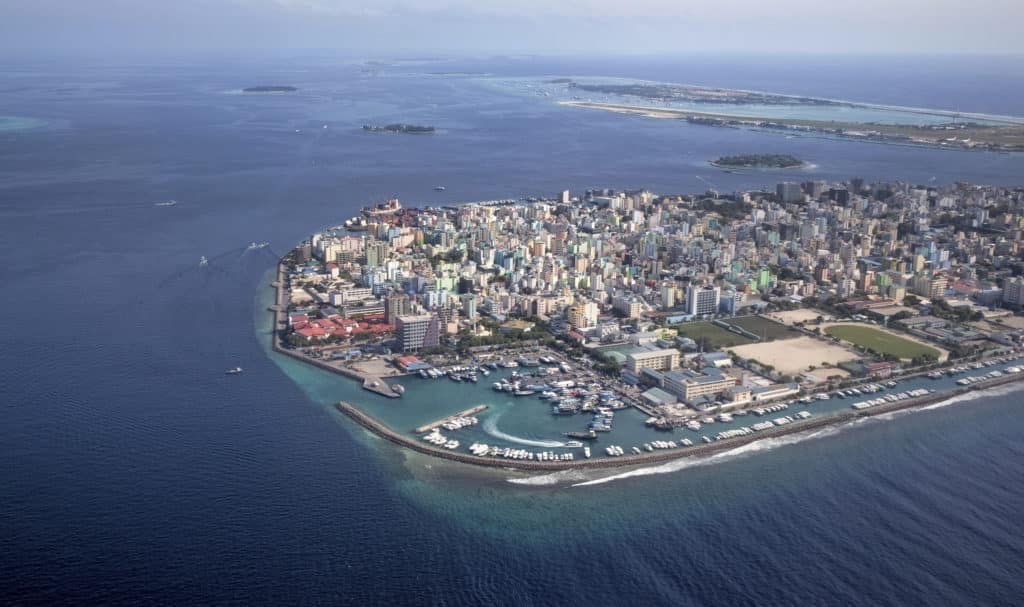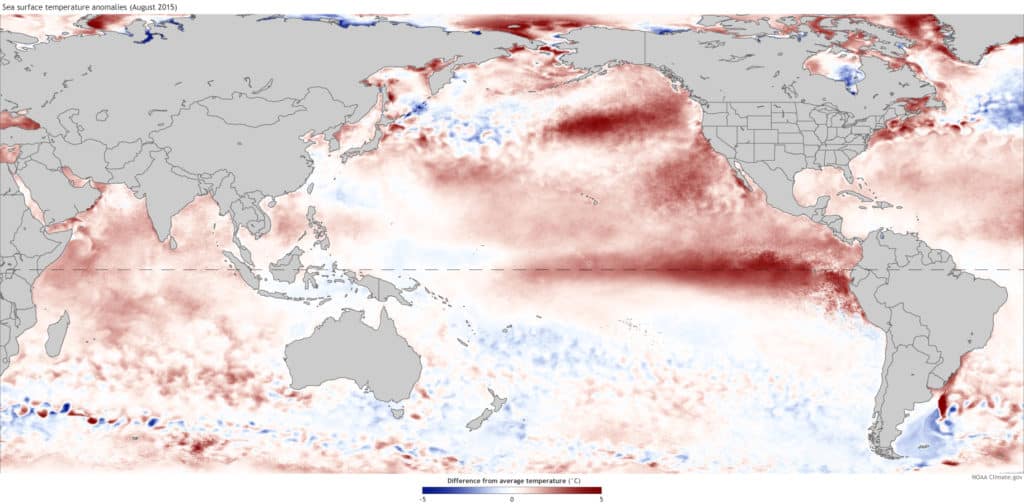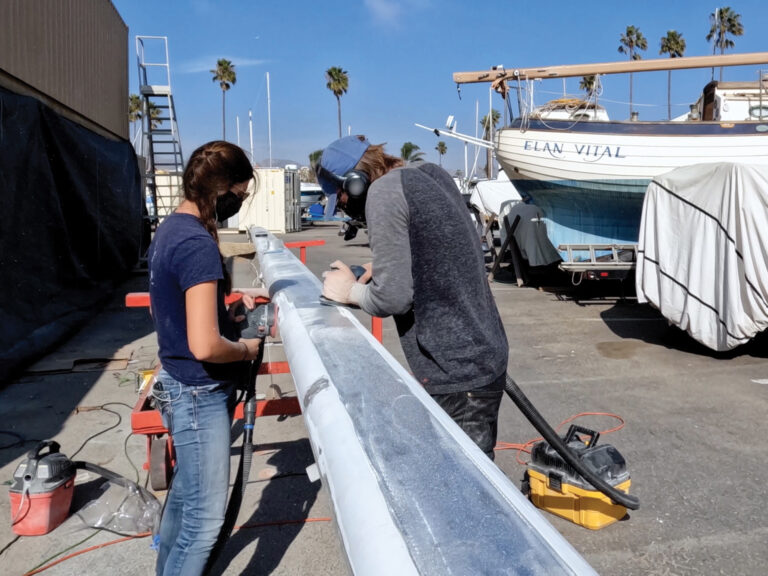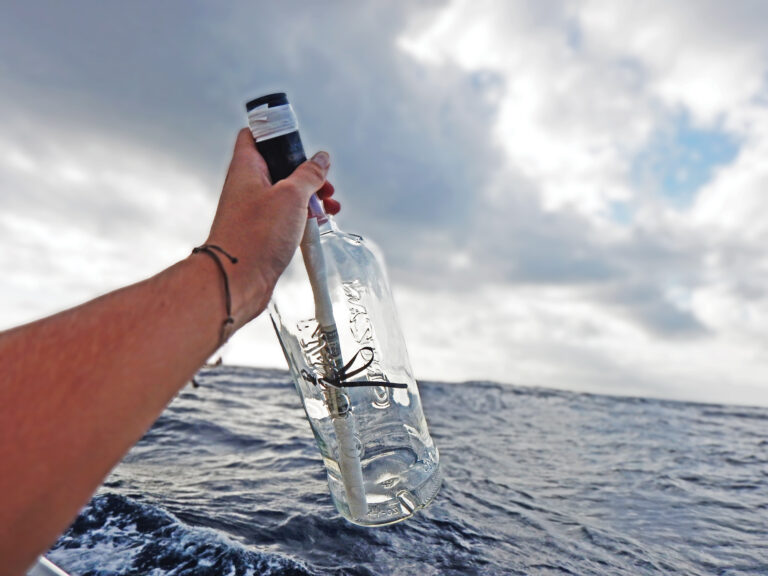
More than any other group I know, sailors are keenly attuned to the nuances of wind, waves, tides, storms, calms, barometric pressure, clouds and temperature. A new term in the sailor’s glossary, climate change, is going to be a factor in all things sailing for the rest of our lives and beyond.
A report released in December 2013 by the Intergovernmental Panel on Climate Change predicted an 8- to 10-degree F rise in temperature by the end of this century. For people who pay attention to such things, those numbers are alarming. In matter-of-fact scientific monotones, the atmospheric physicists who wrote this new assessment envision a world much changed from the one we know today, and their findings and predictions pose troubling questions for long-distance sailors: How is climate change going to affect winds, ocean currents and weather patterns around the world? How is climate going to alter the way we voyage across oceans in the coming decades?
To get a real-world fix on answers to those questions, I sat down with Dr. Philip J. Rasch, a rock-star climate modeler at the Pacific Northwest National Laboratory in Richland, Washington. I asked Rasch — himself a sailor — to explain in broad terms what we can expect from climate change in the near future.
PV: As you know, most bluewater cruisers do their open-water sailing in a belt that girdles the globe between 25 degrees N and 25 degrees S. What, if any, are the changes in weather patterns that climate models see emerging as long-term trends in tropical and subtropical waters?
Rasch: There are many different ways to answer that question. Over the last century we’ve seen ambiguities in wind and wave patterns around the globe, and for the purposes of understanding how climate is influencing those circulation patterns, it’s not helpful to isolate the tropics from the midlatitudes, or the midlatitudes from the higher latitudes. They’re all tied together. That said, there are clear signals, or signatures, for strengthening wind speeds in some regions and diminishing wind speeds in others. In the tropical zone, storms are increasing in strength, but it’s unclear yet whether they’re increasing in frequency.
Related to that, another signature that seems to be robust is changes in wave height in the midlatitudes of the Pacific and Atlantic. This may be influenced by a climate feature near the equator called the intertropical convergence zone. This zone seems to have shifted southward over the last century. That shift determines where the maximum precipitation falls, where it rains on land, and how cyclones get steered over water. If you’re a farmer in Africa or a fisherman in the Atlantic, or sailing in those areas, that’s going to be a very big deal.
PV: Some of the changes in the climate models seem counterintuitive, such as diminished wind speeds in tropical and subtropical zones and an increase in trade winds. What causes that?
Rasch: When we talk about climate, as opposed to weather, we have to think about how the wind fields and ocean currents distribute heat around the planet. More energy tends to get soaked up in the equatorial regions, and that heat gets redistributed to the rest of the planet by wind and ocean currents. The polar regions radiate some of that heat back into space. Winds carry equatorial heat to the poles, along with greenhouse gases, in great circulation patterns that have been controlling our global climate for centuries.
We’ve detected a spinning down of those circulation patterns, a diminishing of winds associated with those patterns, in the tropics. Some circulations go north and south while others go east and west. These circulation patterns, and percolation systems in the ocean, deep underwater, move heat around the planet. Right now, all of those patterns of heat distribution are in a state of flux.
PV: What do climate models tell us about the influence of El Niño and La Niña events in coming years?
Rasch: The models predict that these patterns are going to intensify. There’s also a suggestion that the El Niño southern oscillation patterns are shifting eastward. Rising ocean temperatures will change El Niño’s intensity and position, and this will have far-reaching consequences, a kind of cascade of effects. The coastlines of Peru and Chile, for example, enjoy an upwelling of nutrients from deep in the ocean that brings food to their fisheries. Small changes in those currents and ocean temps can have big impacts downstream. Fisheries scientists in the Southern Hemisphere are very worried about this because it has the potential to affect huge population centers in South America and Africa.

PV: You’ve said that sailors tend to think of weather patterns over water, when in fact many of those patterns are set in motion by phenomena on land. Could you tell us a bit more about that, and how climate change will influence those patterns?
Rasch: A good example of this begins in Africa. There’s been a shift in rainfall patterns over Africa that’s associated with this intertropical convergence zone that I mentioned. The Sahel region of Africa, a band between the Sahara and the savanna, is drying up as a result of precipitation being moved into new circulation patterns. This climate feature over Africa also sets loose easterly wave patterns in the atmosphere that are the progenitors of tropical cyclones. Small shifts in weather patterns over land can have huge influences on what happens over the oceans.
PV: We hear a lot of conflicting speculation about climate change influencing both the strength and frequency of major storms. What can the models tell us about emerging storm patterns?
Rasch: Let me answer that by saying a lot of people are worried about the effects of surface flow, like the Gulf Stream in the Atlantic and the Kuroshio Current in the Pacific. These warm rivers of water in the oceans carry heat away from the equatorial region and send it north toward the poles. We’re very interested in getting a better understanding of how those circulation patterns will influence storms and the distribution of heat to the Pacific Northwest and northern Europe.
These are complex systems. Warmed water is carried north, and then another circulation pattern returns the cooled water to the equatorial region, like a continual heat sink. This circulation takes place over centuries, but it has a huge influence on ocean temperatures and storm formation. The more heat carried in the surface water, the more intense the storms will be that are fueled by that energy. This is called the meridional overturning circulation, or MOC, and while most people have never heard of it, it’s very important, especially as ice sheets in the Antarctic and Greenland melt at faster and faster rates.
PV: So Greenland ice melt could play a role in the formation of tropical storms?
Rasch: Yes, it already does. You have to look at the storm track regions across the planet. Each one is different, but overall, storm track regions are projected to move closer to the poles. … As they move closer to the poles in these wavy, meandering currents of air, the amplitude of the storms is also projected to change.
PV: If you were planning a long-distance cruise with your family, which feature of climate change would loom large?
Rasch: As the planet continues to warm, there’s the expectation that wave heights at midlatitudes will continue to get higher. Tropical cyclones and hurricanes are going to get stronger. In the overall pattern, wet places are going to get wetter, and the dry places drier.
Ten years ago, the IPCC [Intergovernmental Panel on Climate Change] reports weren’t terribly concerned about sea-level rise, but they are now. That shows you how fast things have changed.
As more ice melts in the polar regions and the oceans warm, the volume of water not only increases, but the water itself expands. We used to think low-lying island groups like the Maldives, in the Indian Ocean, were safe through the end of the century. No longer. The Maldives will be underwater in the next few decades.
PV: That’s a sobering prediction.
Rasch: Yes, it is. In terms of climate, we’re in uncharted waters.
Pacific Northwest sailor Paul VanDevelder is a regular contributor to the Los Angeles Times and The New York Times on the environment and natural resources.








